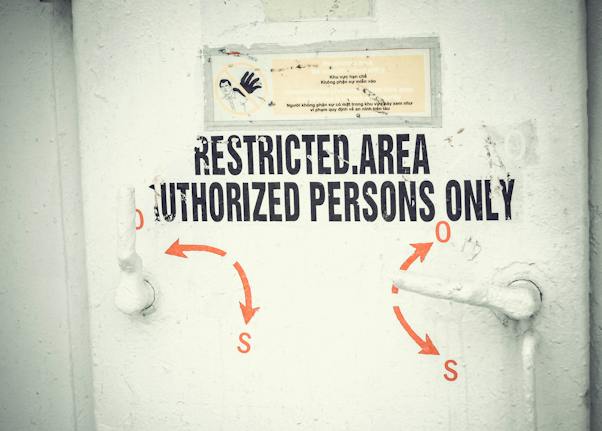What is Red Teaming? A Deep Dive into Business Security Strategies
 Red teaming is the practice of simulating an adversary and testing the effectiveness of a company's security systems. Red teaming has been around for decades, but it's becoming increasingly important as more businesses become targets for cyberattacks.
Red teaming is the practice of simulating an adversary and testing the effectiveness of a company's security systems. Red teaming has been around for decades, but it's becoming increasingly important as more businesses become targets for cyberattacks.
Defining Red Teaming
Red teaming is a type of adversarial simulation. Red teams are groups that simulate the actions of an attacker to test the security of an organization. These teams can be internal or external, but they all have one goal: to find vulnerabilities in your system and improve it through constructive criticism. They will try to hack into your network and make sure you're prepared for real-world attacks by simulating those situations in exercises like penetration testing and red teaming exercises (RTX).
Red teaming is used by organizations around the world because it's effective at identifying weaknesses in their defenses and improving them before an actual attack occurs.
The best way to protect yourself against cyber threats isn't just doing more research. It's also about knowing what you'll do when something goes wrong so you're ready for anything. For a comprehensive red teaming service, you may consider partnering with a professional red team company. These companies specialize in simulating realistic cyber threats to identify vulnerabilities and enhance your organization's cybersecurity defenses.
Origins and Evolution of Red Teaming
Red teaming is a technique used in military and intelligence communities to evaluate plans, strategies, operations, and security. The goal of red teaming is to identify vulnerabilities and develop solutions for them before they can be exploited by adversaries.
Red teams were originally developed as part of the U.S. Department of Defense's (DoD) National Training Center (NTC) program at Fort Irwin, California, in the 1980s. They were then adopted by other government agencies, such as the CIA. In recent years, red teaming has evolved into an important tool for businesses looking to test their security plans.
Roles and Responsibilities of Red Teamers
 The role of a red teamer is to test the security of a system or network. Red teamers are responsible for finding vulnerabilities, gaps in security, and risks within an organization's systems.
The role of a red teamer is to test the security of a system or network. Red teamers are responsible for finding vulnerabilities, gaps in security, and risks within an organization's systems.
Red teamers help answer questions like:
- What are our biggest threats?
- How can we protect against these threats?
- Are we currently protected adequately against those threats?
Simulating Adversarial Attacks
Red teaming is a process of simulating an attack by an adversary. The goal of red teaming is to identify vulnerabilities and risks that may exist in your organization, as well as potential solutions for addressing these issues. Red teams can be used in many industries, including finance and defense.
In order for red teaming to be effective, it must be conducted on a regular basis (i.e., not just once or twice per year). You'll want to make sure you have enough time before launching into this type of simulation. That’s to fully prepare yourself by doing research into how other companies have approached similar challenges in the past and what they did right or wrong.
The most common types of red team exercises include:
- Penetration testing - This involves sending malicious traffic through firewalls into an organization's network until it finds weaknesses that allow access from outside sources (like hackers).
- Social engineering - This involves using human intelligence techniques such as phishing emails or phone calls to trick people into giving up critical information about themselves or their company's security system designs/patterns.*
Methodologies in Red Teaming
 Red teaming is not an activity but rather a process that uses a variety of techniques to simulate the actions of an adversary. The goal of red teaming is to challenge your organization's ability to defend against real threats by allowing your team members to think like attackers and try their best at breaking in.
Red teaming is not an activity but rather a process that uses a variety of techniques to simulate the actions of an adversary. The goal of red teaming is to challenge your organization's ability to defend against real threats by allowing your team members to think like attackers and try their best at breaking in.
The most common technique used during red teaming exercises is called "Threat Modeling." This involves analyzing your company's assets and identifying potential vulnerabilities based on this analysis. Threat Modeling can include physical security assessments or social engineering tests (more on those later).
Once these vulnerabilities have been identified, they can be mitigated by implementing new policies or procedures within your organization. Policies that better protect those assets from being exploited by malicious actors trying to break into them.
Industry Applications of Red Teaming
Red teaming is a widely used technique in the private sector, government, and military. In fact, many companies have red teams that work with their cyber-security teams to test their systems and people. Red teaming can also be used by an outside party as an independent evaluation of your company's security measures.
The goal of red teaming is to find vulnerabilities in your system before they are exploited by hackers or malicious insiders. This can save you time and money when it comes time for repairs. For example, if someone attempts to hack into your network but fails because you have strong passwords or other protections in place (such as firewalls). Then, there will be no damage done once they're kicked out of the system again. Still, if there had been no protection at all on those accounts, then every single employee would have had access to sensitive information like payroll data or customer records.
Benefits of Red Teaming
Red teaming is a method of assessing your organization's security posture. It involves testing the effectiveness of your existing security measures and identifying any weaknesses in those measures. Red teaming can help you find vulnerabilities that other security measures miss, identify new threats, learn from past mistakes, provide a different perspective on problems, and improve your organization's overall security posture.
Red teams are often made up of people who have been hired specifically for their ability to think outside the box or act like someone who wants to do harm against an organization's systems and data (in other words, bad guys). These individuals may come from different backgrounds than those working in IT or information security roles within an organization.
For example, they might be trained military personnel with experience conducting attacks against enemy targets during wartime missions overseas. In addition to being able to think like adversaries, seeking out weaknesses within defenses put up by companies like yours, and therefore helping identify ways these could be improved before real hackers get hold of them.
The presence within any given red teaming exercise also serves as motivation for everyone else involved because they know their jobs depend upon finding out what type of threat would cause harm if not stopped beforehand.
Red teaming is an important part of a comprehensive security program because it helps identify vulnerabilities and threats. Red teaming can be used to help you understand your own organization's weaknesses, strengths, and opportunities for improvement.
Conclusion
Red teaming is an important part of a comprehensive security program. Red teamers help organizations identify and mitigate their vulnerabilities, but they also work with other teams like information security and IT to ensure that the organization's defenses are up-to-date and effective. Red teaming can be used both internally and externally by organizations as well as by adversaries in simulated attacks against them.